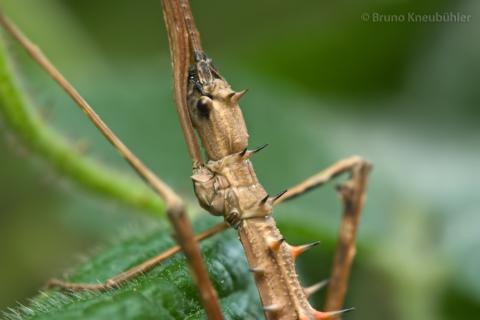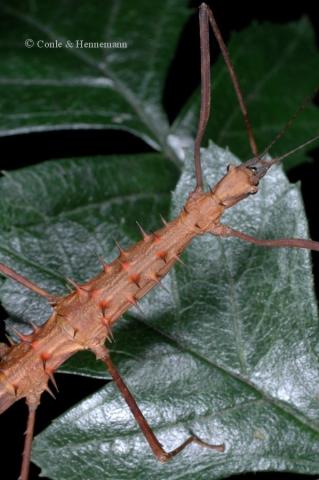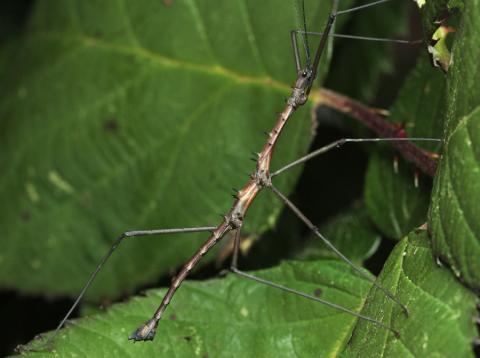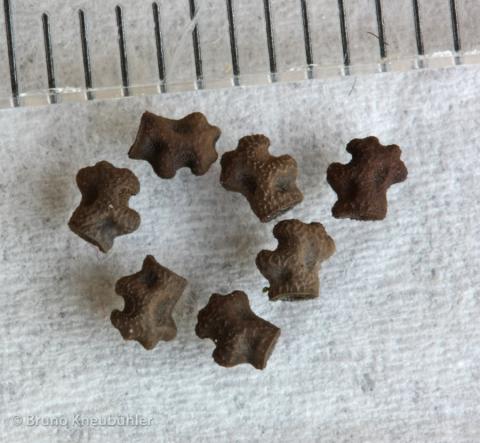
Genus
Species
Stock
CLP
71
PSG
295
Culture status
In culture
Foodplants
Bramble (Rubus spp.)
Ivy (Hedera helix)
Lonicera nitida
Breeding notes
(by Bruno Kneubühler)
General Notes
- originally described by Dohrn Menexenus polyacanthus in 1910
- further synonyms: Menexenus horridus (Günther, 1935), Menexenus horridus polyacanthus (Günther, 1938)
Females
- very pretty phasmids - about 5,5 - 6 cm long
- very spiny - some spines on the thorax are orange in colour, with a dark tip
- body colour is a lighter brown with darker drawings, but colouration varies between different specimens
- long antennae
Males
- about 4,3 cm long
- also very spiny, these spines are unichrome
- most of the males are brown or reddish-brown
- but some males are beautifully bluish
- this bluish coloration may depend on the food plants or the humidity
- antennae are longer than the fore legs
Eggs
- about 2 x 2 mm
- dark brown
- flattened, irregularely shaped
- surface is slightly rough, not shiny
Food Plants
- nymphs feed from the beginning nicely on Bramble (Rubus sp.)
- adults also like Lonicera nitida (a common ground coverer in gardens) and ivy (Hedera helix), though not tested with nymphs
- other breeders also feed them with fern
Breeding Notes
- an easy to breed and attractive species
- incubation of the eggs on damp (not too wet) sand, with springtails to reduce mould growth
- incubation at room temperatures (20-23°C)
- incubation time about 3-4 months
- hatching ratio was higher than 50%
- nymphs grow without further problems, few casualties
- a Faunabox (or similar cage) is perfect to breed them
- I do not spray my culture. A constantly wet paper on the cage bottom provides enough humidity
- males will be adult after about 3 months, females after about 3,5 months
- mating can be oberved when they are adult for some weeks
- females will start to lay eggs after about 4 weeks
- eggs are just droped to the ground
Some basics of phasmid breeding
- our detailed notes on how to successfully breed phasmids are an integral part of this care sheet
- keep just one species per cage, we even often use 2 - 3 cages per species (depending on the size of the species)
- use the full and correct culture name with provenience affix in brackets, yet never use common names. For example Trychopeplus laciniatus "Monteverde", but not "mossy mountain phasmid". This supports the serious breeder's efforts to keep cultures pure. Informations on why and how to keep cultures seperate and pure
- try to keep (day) temperatures below 28°C, while a nocturnal temperature drop is natural and advisable
- do not spray too often, phasmids are no fish
































